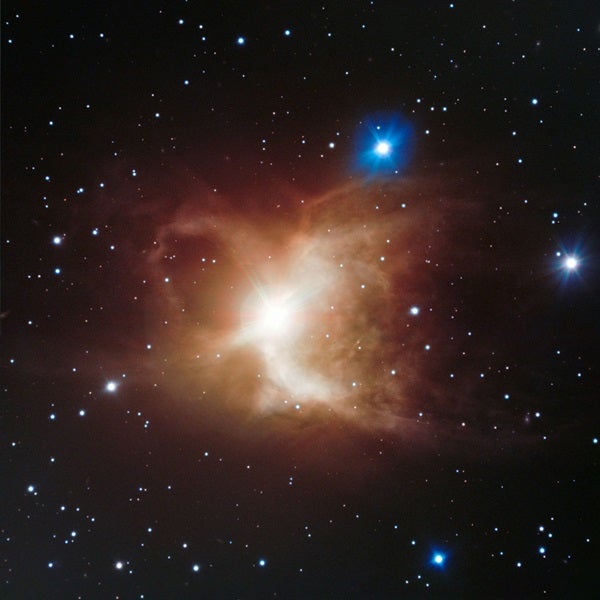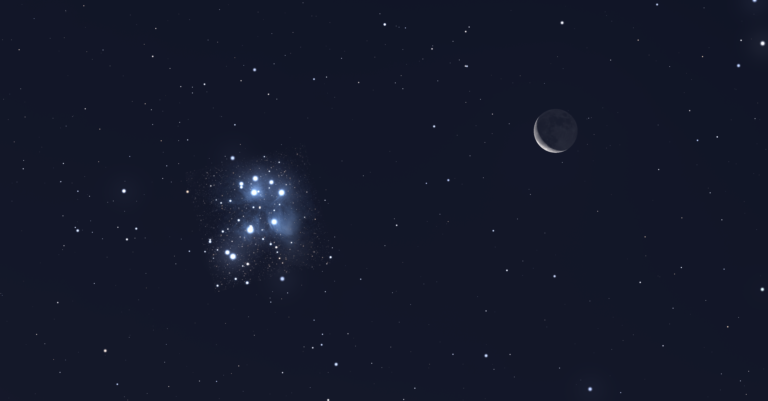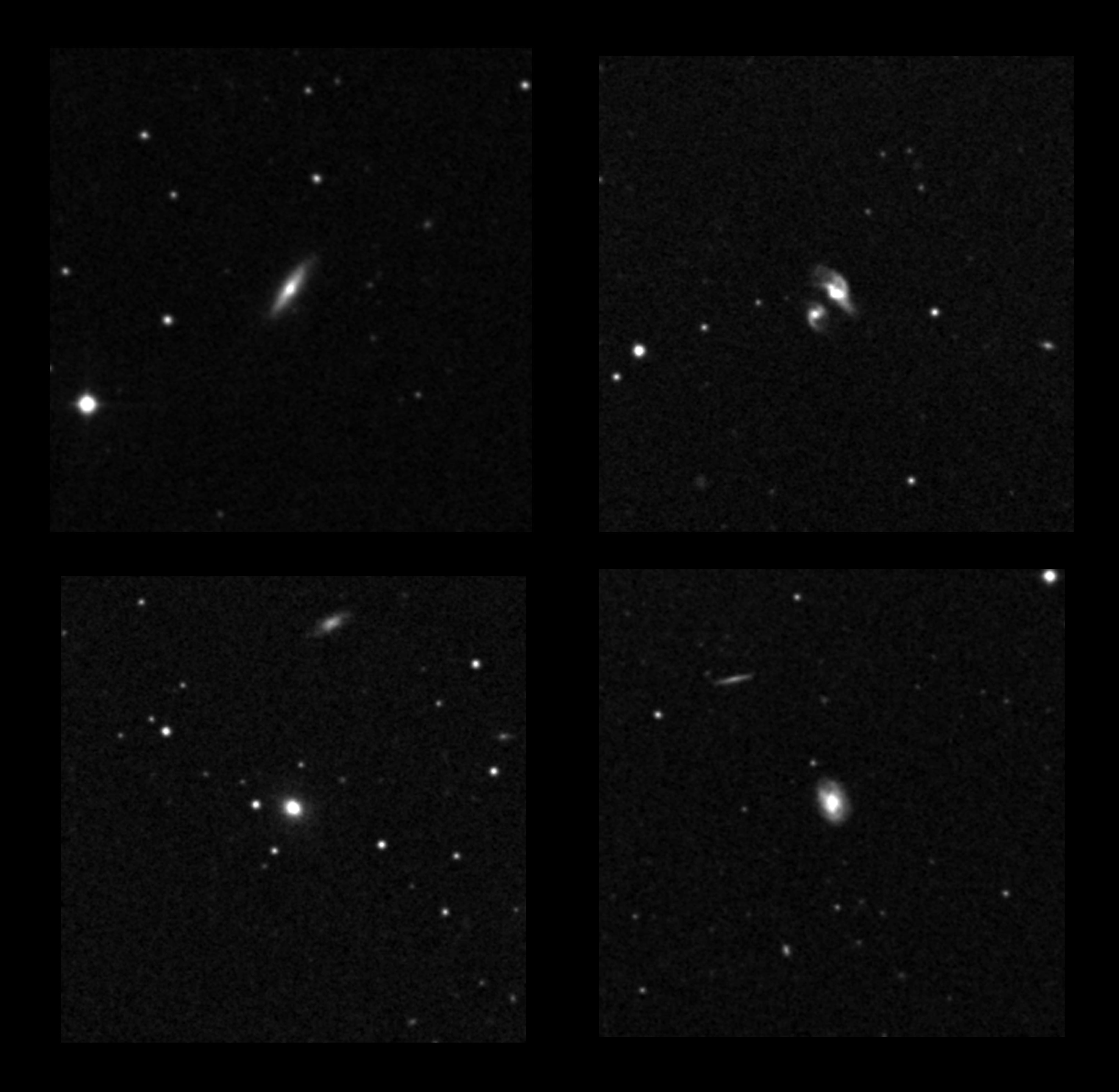Located about 1,200 light-years from Earth in the southern constellation Carina the Keel, the Toby Jug Nebula (IC 2220) is an example of a reflection nebula. It is a cloud of gas and dust illuminated from within by a star called HD 65750. This star, a type known as a red giant, has five times the mass of our Sun but it is in a much more advanced stage of its life, despite its comparatively young age of around 50 million years.
The nebula was created by the star, which is losing part of its mass out into the surrounding space, forming a cloud of gas and dust as the material cools. The dust consists of elements such as carbon and simple heat-resistant compounds such as titanium dioxide and calcium oxide (lime). In this case, detailed studies of the object in infrared light point to silicon dioxide (silica) being the most likely compound reflecting the star’s light.
IC 2220 is visible as the star’s light is reflected off the grains of dust. This celestial butterfly structure is almost symmetrical and spans about 1 light-year. This phase of a star’s life is short-lived, and such objects are thus rare.
Red giants are formed from stars that are aging and approaching the final stages of their evolution. They have almost depleted their reserves of hydrogen, which fuels the reactions that occur during most of the life of a star. This causes the atmosphere of the star to expand enormously. Stars like HD 65750 burn a shell of helium outside a carbon-oxygen core, sometimes accompanied by a hydrogen shell closer to the star’s surface.
Billions of years in the future, our Sun will also bloat into a red giant. It is expected that the solar atmosphere will inflate well beyond the current orbit of Earth, engulfing all the inner planets in the process. By then, Earth will be already in bad shape. The huge increase of radiation and the strong stellar winds that will accompany the process of stellar inflation will destroy all life on Earth and evaporate the water in the oceans before the entire planet is finally melted.










